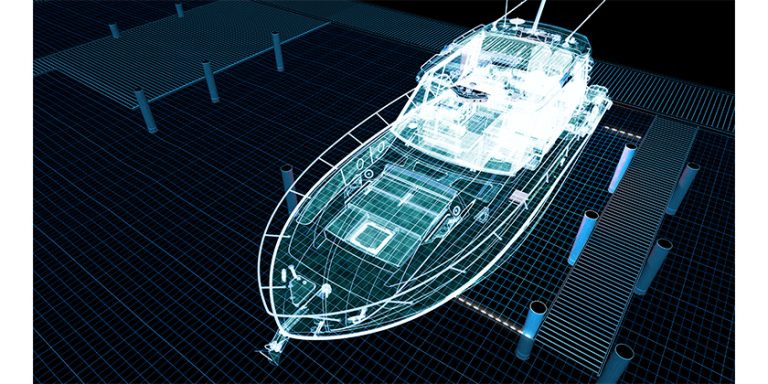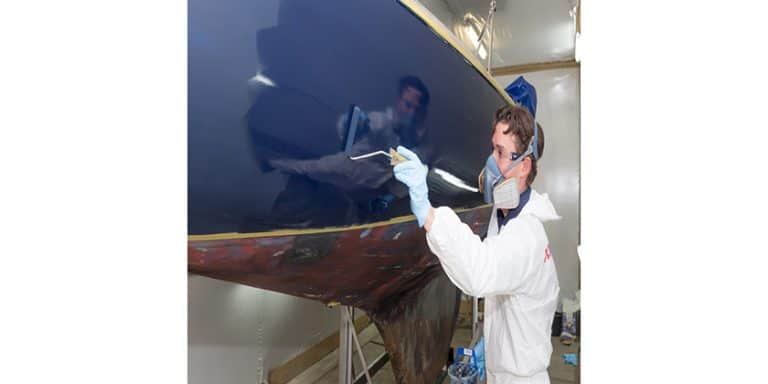Sail Replacement and Purchasing Process (Part 1 of 2)
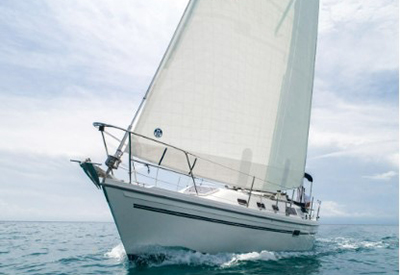
Jan 11, 2022
by Marc Robic
For many sailors north of the snow belt, haulout means getting the boat ready for winter, which inevitably involves removing the sails. Oddly enough, winter is often the first time we really take a close look at them as we spread them out, flake and fold them. This is when we can closely inspect and spot some troublesome areas.
Like many fellow sailors, I have been stretching my luck with my Genoa for many years. After all, it is the original sail, dating back to 1995 (that’s 25+ years!) when the boat was built. But this year, I can no longer ignore the fact that she’s old, used and blown out. The threads are tired, some dry and starting to come apart, the foot and leech edges are worn and the UV band on the leech and foot is starting to dry up, showing cracks and peeling. It is time to face the music! This genny is ready to be retired and be donated to a better cause, such as fundraising organizations that convert old sails into bags and such.
After sailing for more than 40 years, this is not my first new sail purchase.
I searched for Canadian sail providers. After speaking to many and getting multiple price quotes (seven in all), I was pleased to see that all sailmakers were approximately within the same price range, and all had excellent online reviews and reputations. The hard part was choosing.
My first instinct was to try to stick to sailmakers with actual sail lofts here in Canada. I found that most, but not all, sailmakers listed in Canada have their sails made by their own sail loft or third-party sailmakers located in other countries in Asia, the UK or the USA.
After considering all the quotes and conversations with many providers, I elected to go with Precision Sails on Vancouver Island. I liked the process and information provided throughout the process, plus the reviews were good, including from fellow members of my own yacht club.
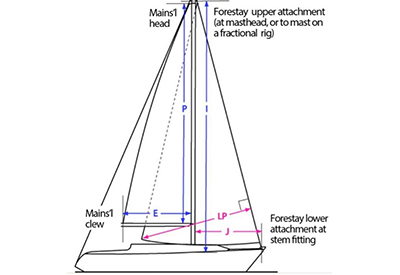 Our sail
Our sail
The first question any sailmaker should be asking is what type of sailing you do. If you’re like us, mostly coastal and lake sailing and cruising, the type of sail design, material and fabrication will be much different than that of sailors who race most of the time. There are of course midpoint sails that represent a happy medium between a cruising and a racing sail. Not to mention a myriad of types of materials and options to choose from.
If your sail is on a furler, one option to consider is whether a foam or rope luff would be a benefit to you and your style of sailing. A foam or rope luff allows for a nicer sail shape at the luff when reefing (or furling) in the foresail to reduce its size in a strong breeze. But these can also wear out faster than the sail will. Since I am a cruiser, I opted not to have this option. Instead, when furling the foresail, I’ll adjust the genoa cars forward on the track.
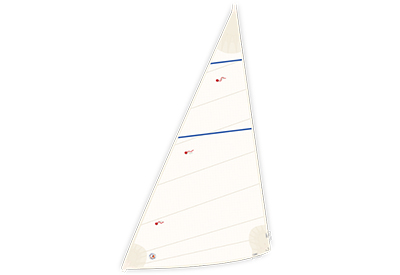 Draft lines
Draft lines
Draft lines are another option. These are parallel lines in contrasting colours, that go from the luff to the leech allowing you to visually see the shape of the sail. The jury is still out on the benefits of draft lines. Since they are added to one side of the sail only, these may affect the furling performance over time as the fabric used for these may stretch or shrink at a different rate than the sail fabric itself. So, if you do go with draft lines, my recommendation is to have them added to the outside of the (furled) sail.
After receiving my quote, I asked more questions and then went ahead with a deposit. A consultation call was set a few days later with my assigned sail designer. I decided to go with a simple furler luff, three sets of flying telltales, blue draft lines and a lightweight white UV band on the leech and foot. A simple cruising sail that will perform as well as the original sail. Choosing a coloured UV band usually mean a heavier fabric, such as Sunbrella, and I did not want that extra weight, which would affect performance in light air sailing.
 More considerations
More considerations
Give some thought also as to what you like and dislike about your current sail. For example, maybe it is lower than the lifelines and blocks your view forward when sailing upwind. This is a good time to have a sailmaker design a sail that will avoid that. In my case, when tightening in the sail for upwind sailing, the foot rides over the top lifeline, causing premature wear on the foot.
Once a quote is provided, you receive log in information to access your own account with access to all your account information, purchase history, sail quotes and more. Precision, like most of the others, provided a wide range of videos on all things sails, such as how to measure and trim, etc. Accessing your account whenever you want to follow the progress is also kind of cool! You also get an email as each stage is completed.
In part 2, we’ll go through the final design process to the production and finally, the delivery.
 Marc Robic
Marc Robic
Marc is a member of the Canadian Power & Sail Squadron. He and his wife sail their Catalina 270, Aquaholic 3, out of the Ile-Perrot Yacht Club in Montreal, where Marc spent 16 years as Harbour Master. They are regular Caribbean bareboat yacht charterers. With over 40-years experience, Marc is also an avid onboard do-it-yourselfer.

